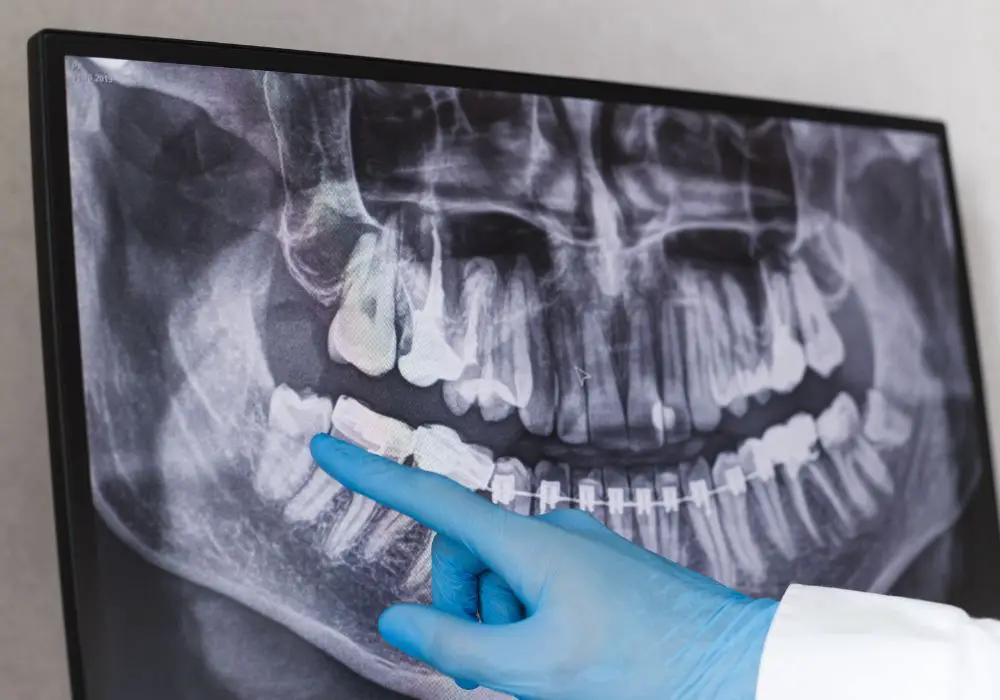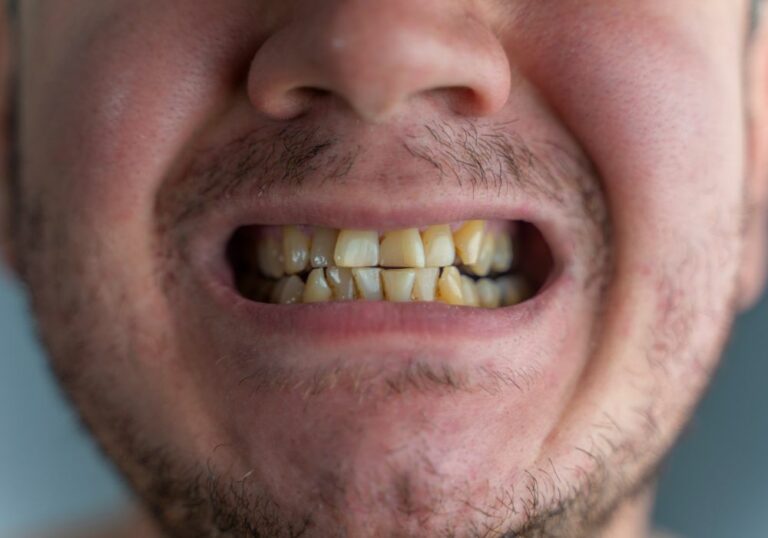It’s common for stitches to work themselves out and start hanging after wisdom tooth extraction surgery. This is especially true with dissolvable sutures, which are designed to slowly dissolve over time. Stitches coming loose or poking out doesn’t necessarily mean there is an issue. However, hanging stitches can be uncomfortable and increase infection risk if left alone too long. Understanding why stitches become loose and what to do about them can help minimize complications.
Reasons Stitches May Loosen or Poke Out

There are a few key reasons wisdom tooth extraction stitches may start to loosen or hang out of the surgical site:
Dissolvable suture material
Most oral surgeons use dissolvable sutures that are made of material designed to break down and absorb over time. The sutures may begin dissolving within the first 3-5 days after surgery. As the sutures break down, they are more likely to become loose or fall out. This is normal with dissolvable stitches.
Food impaction
Eating and drinking can lead to small food particles getting trapped under the stitches. As you continue to eat and drink normally, the food debris can push on the sutures and cause them to loosen. Crunchy, sharp, or sticky foods have more potential to dislodge healing stitches.
Oral hygiene
Brushing and flossing are important after extraction, but vigorous oral hygiene can tug on closing incisions. The motion of brushing near the surgery site may cause sutures to become unanchored.
Swelling reduction
Facial swelling and inflammation after wisdom tooth removal can place outward tension on closing incisions. As post-operative swelling goes down, there is less tension holding stitches in place. The reduction in swelling and pressure may lead to loose, hanging sutures.
Physical activity
Increased physical activity within the first week after surgery can potentially cause stitches to dislodge. Activities like exercise, playing sports, and strenuous work may loosen sutures as the facial muscles flex and relax. Talking and facial expressions can also pop stitches.
Scarring and healing
As the extraction sites heal internally, scarring begins to develop and the tissues regain strength. This reduces the need for sutures to hold the incision edges together. The natural healing process makes it easier for even non-dissolvable sutures to loosen.
Signs of Problem vs. Normal Healing

Some minor loosening of wisdom tooth stitches is expected, especially with the use of dissolvable suture material. However, if you notice any of the following, contact your oral surgeon since it may signify an issue:
- Multiple stitches have come completely undone, leaving a large open area
- There is persistent bleeding from the surgery site
- You notice a bad odor or taste coming from the surgery site
- The incisions appear red, swollen, or inflamed
- You have fever, chills, nausea or other signs of infection
On the other hand, you don’t necessarily need to worry if:
- You have mild discomfort from a poking or scratchy suture
- Single suture threads have come loose but incision remains closed
- There is no bleeding or other signs of complication present
Your surgeon can examine the area and make sure you are healing normally. They may trim irritating suture tips or replace stitches if enough have prematurely come out.
Managing Loose or Hanging Stitches

While you heal, you can manage dangling or partially dislodged wisdom tooth stitches in a few ways:
- Leave them alone: Often stitches that are still partially anchored will fall out on their own once the incision has closed enough internally. You can allow naturally loosened sutures to come out when eating or brushing. Avoid pulling on them.
- See your oral surgeon: If multiple stitches have come completely undone or you have other concerns, call your surgeon to have the sutures checked. They can assess if any stitches need replacing.
- Keep the area clean: Continue gentle oral hygiene around the surgery site to prevent food particles from getting trapped under loose sutures. Use warm saltwater rinses to keep the area clean.
- Be gentle: Avoid activities that exert excessive force on your mouth and face. This can help prevent additional sutures from coming loose or incisions reopening.
- Use ice packs: Icing the face can minimize swelling and inflammation that may be putting tension on sutures. Apply ice on and off for 10-minute intervals.
- Take pain medication: Over-the-counter pain relievers like ibuprofen can relieve discomfort from hanging stitches rubbing on your cheek and gums.
When to Call Your Surgeon
You should call your oral surgeon promptly if you experience any of the following:
- Bleeding that won’t stop after applying pressure for 15-20 minutes
- Intense or throbbing pain that is not relieved by medication
- Bad taste or odor coming from extraction sites
- Significant facial swelling lasting longer than 3-4 days
- More than 2-3 stitches have fully come undone
- Signs of infection like fever, chills, nausea or fatigue
While minor stitch issues are normal, uncontrolled bleeding, increasing pain or definite signs of infection require prompt attention to avoid more serious complications. Your surgeon can decide if stitches need replacing or if you need antibiotics or other treatment.
Frequently Asked Questions
How long do wisdom teeth stitches take to dissolve?
Most dissolvable wisdom tooth extraction stitches begin dissolving 3-5 days after surgery. However, complete dissolution generally takes 1-2 weeks. As they dissolve, the sutures may loosen and fall out on their own.
Should I call the dentist if my stitches come out after wisdom teeth removal?
You generally don’t need to call the dentist if one or two dissolvable sutures have come out, as long as the incision remains closed with no persistent bleeding. But do call if you have 3 or more loose stitches or any signs of complications.
Is it normal for my wisdom teeth stitches to be hanging out a week later?
It is fairly common for some loosening of wisdom tooth stitches within the first week after surgery. Discomfort from dangling sutures is normal. But be sure to keep the area clean and watch for infection. Call your oral surgeon if multiple stitches are completely undone.
When can I stop worrying about dry socket after wisdom teeth stitches fall out?
Dry socket risk remains for at least a week after your wisdom teeth are extracted. Be very gentle on the surgery sites even once stitches begin falling out around 5-7 days later. Avoid dislodging the blood clots as this can lead to painful dry socket.
How do I trim loose wisdom teeth stitches?
It’s best not to trim or pull on any partially dislodged sutures yourself. Let the oral surgeon evaluate them at your follow-up appointment. Trimming stitches too soon may undo the closure. If a suture is scratchy but still in place, you can gently tuck it into the cheek with gauze until the follow-up visit.
Summary
It’s not unusual for some wisdom tooth extraction stitches to start working themselves out or dangling as you heal. This is especially true with dissolvable sutures that are intended to be absorbed over time. While irritating and a bit uncomfortable, minor suture loosening generally isn’t an emergency. But multiple loose or fully undone stitches may warrant having them replaced. Good oral hygiene, soft diet, ice packs and pain management can help with discomfort until bothersome sutures fall out on their own or are trimmed at follow-up. Contact your oral surgeon promptly if you have bleeding, worsening pain, bad odor, or other signs of potential complications. With proper care, wisdom tooth extraction incisions should heal well even if occasional stitches poke out during recovery.







